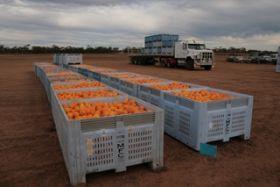
Predictions are sales of Australian citrus into the US will be down significantly this year despite production volumes being well above average.
Citrus Australia value chain coordinator Kym Thiel told Fruitnet.com it was estimated Australia would send just 600,000 - 800,000 cartons of navels to the US this year, marking a significant decrease on past seasons when the country had typically sent 1-1.5m cartons of navels there. Last year Australia exported 1.2m cartons to the US, he added.
A number of factors have conspired against the Australian citrus industry this year, in what Mr Thiel refers to as a near perfect storm.
The country’s navel crop is predicted to weigh in at around 250,000 tonnes this year - a significant increase on last year’s crop of 177,000 tonnes. This size of the crop has put pressure on prices both domestically and abroad. The crop consists of medium to smaller sizes, which are less suited to the US market.
The threat of oversupply is so great the country’s peak industry body Citrus Australia has advised growers against picking fruit less than 70mm.
One of the most prohibitive factors for sales into the US this year, however, is the high Australian dollar, which is currently buying US$1.07. Just two years ago the Australian dollar was trading at US$0.81. The soaring Australian dollar has made it increasingly hard for the country to compete for citrus sales with South Africa and Chile, which enjoy a lower cost of production and more favourable exchange rates.
The decrease in exports to the US this year is part of an ongoing trend as Australia becomes more dependent on markets in Asia. While previously the US had been the leading market for Australian navels, last year it was eclipsed by both Japan and Hong Kong.
Mr Thiel said growers in the country would struggle to turn a profit this year in light of the big crop and high Australian dollar.
“Citrus in general has been doing it tough for a number of years. Those who have diversified, while they won’t have a great year, should at least meet the cost of production.”
Chris Goulding of packhouse Sandalwood Ridge agreed it would be a particularly difficult year for Australian growers.
“It’s as hard as we’ve ever seen it because of the tough export conditions, which is seeing more fruit going onto the domestic market,” he said.
“We were optimistic going into the season, but the offers we have been getting have been a lot lower than what we were expecting.”



